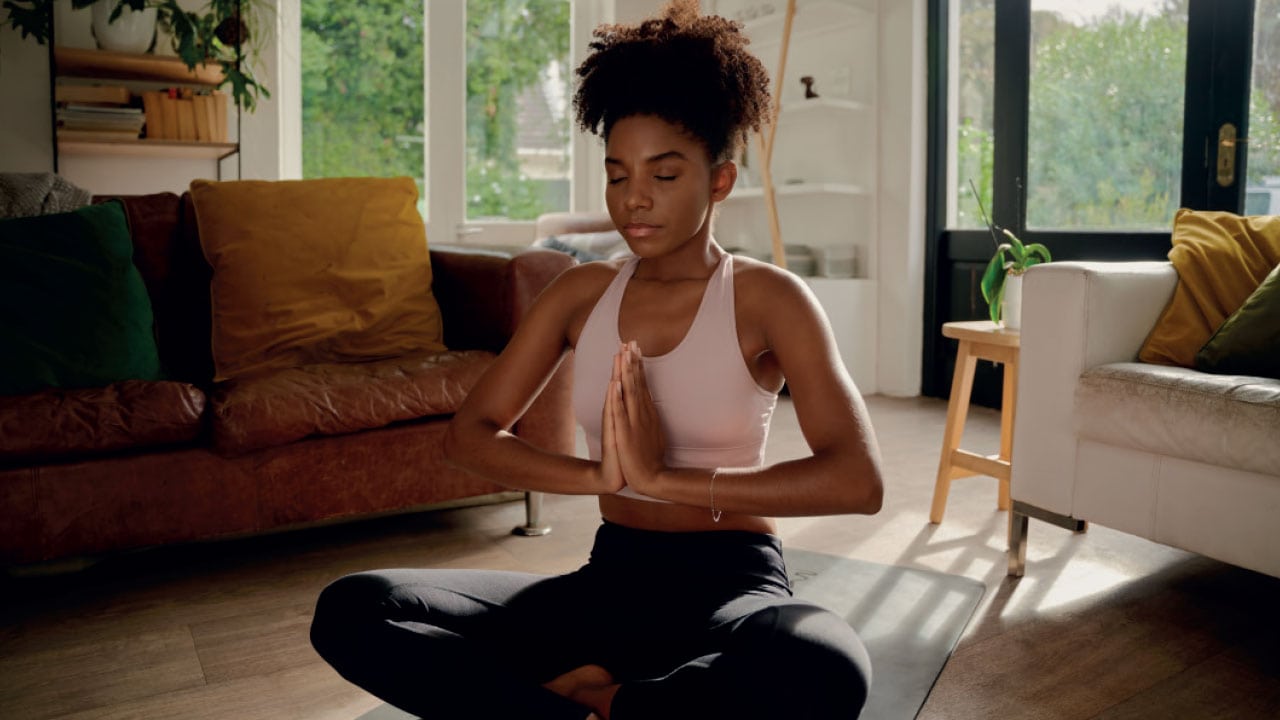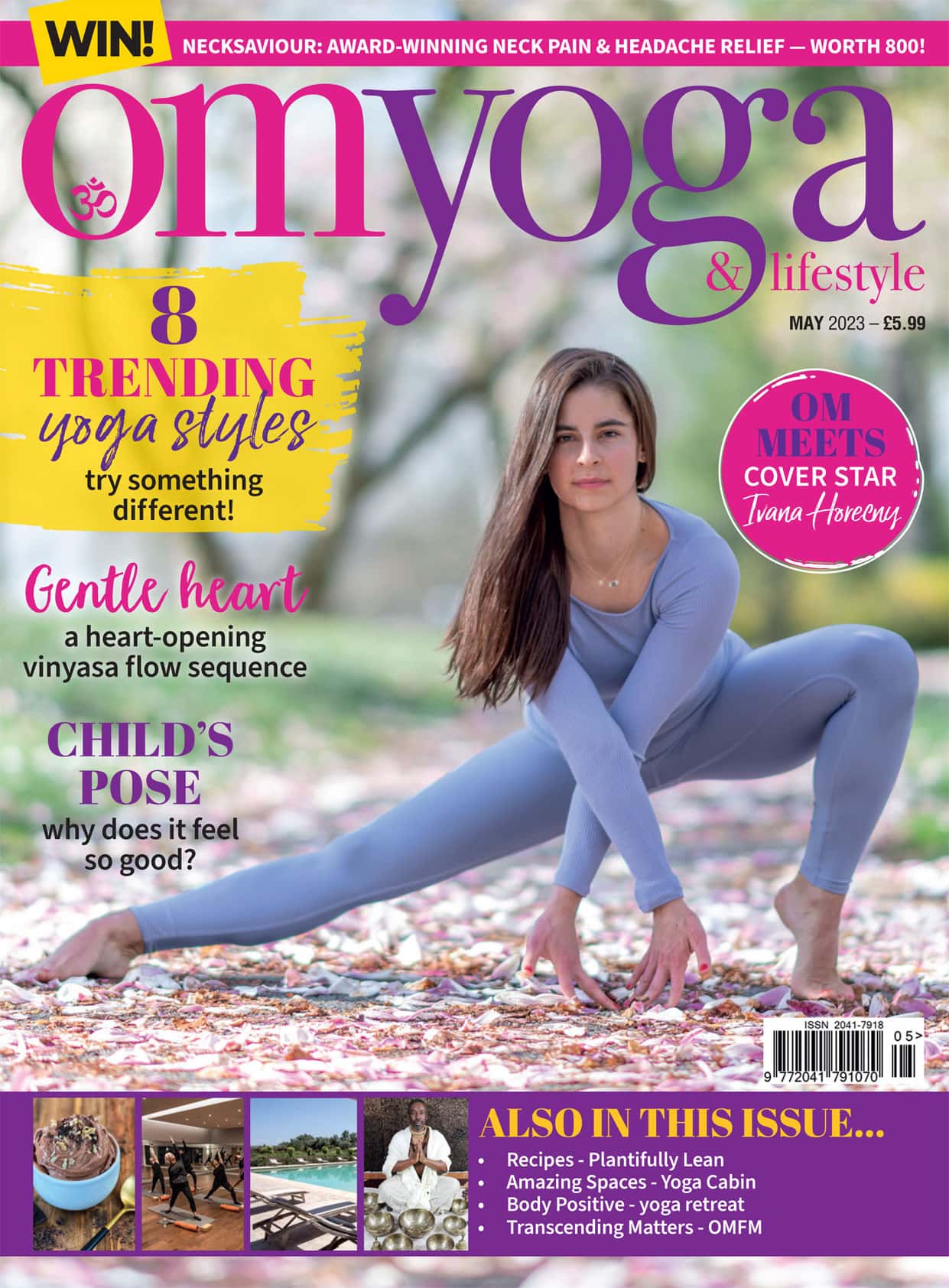
Yoga for trauma
Yoga for trauma is a specialist approach to make the practice accessible to all. By Emma Gwillim
The minute you step into a yoga studio or onto your mat, it can signal, Pavlov's dog-style, that it's time to breathe a little deeper, move your body more intentionally, find the busy thoughts slowing down a little. Yoga can be a spring of calm in an ever-busy world. For the one in six people who will experience a common mental health symptom this week (according to the charity Mind), many might turn to yoga – know for its proven benefits for stress management and mental wellbeing, as well as the physical gains.
But that sense of calm is not readily available for everyone. That same studio or mat could be the trigger for challenging emotions and bodily sensations for some. As a body-based practice, yoga is unavailable to those who feel disconnected from their body, or even see their body as an enemy. It prevents them from accessing the many benefits of this ancient practice.
Enter yoga for trauma, a specialist practice that offers a somatic (body-based) approach to healing trauma.
It sees trauma as both the big events often associated with the word 'trauma', but also the more subtle 'little t' trauma events that can accumulate and have lasting impact on the mind, body and emotions. Through this lens, trauma is seen as the patterns we adopted to help us survive and can show up as the more obvious panic attacks or depression, as well as restlessness or fatigue, trouble sleeping, feeling isolated from others, along with a host of other symptoms in body and mind.
The approach of trauma-informed yoga aims to help people find a sense of safety in their body so they can shift out of survival mode, moving gently towards healing. It's often taught one-to-one as an individualised practiced or in small groups. While there's no single 'trauma-informed' practice, as an approach it often includes three phases: stabilisation, processing and integration.
Stabilisation focuses on bringing the student into the here and now: it builds a capacity to feel safe, to identify what's happening in the body as a function of the nervous system and offers tools for self-regulation of difficult emotions and sensations.
Unlike a regular yoga class, trauma-informed yoga is student-led. Only once a capacity to feel safe has been established would the student begin to explore postures that could be more triggering. The processing phase creates the opportunity to become aware of any unresolved emotions or survival behaviours. It keeps the student within their 'window of tolerance' – their safe mode – and aims to build resilience.
The final phase of integration is an opportunity for reflection, to bring any growth into conscious awareness. Importantly for the trauma survivor, it empowers the student to make new choices and cultivate more nourishing patterns.
You may also notice trauma-sensitive or trauma-aware yoga appearing on studio schedules and class descriptions. Trauma-informed teachers can adapt 'regular' classes to create a safe, stable environment that feels more accessible to people with a history of trauma.
In both the individual and in a class setting, there's a focus on creating an environment that feels predictable and consistent. Simple, habitual practices – such as the lights being dimmed for savasana or the use of props – may be omitted. Hands-on adjustments are not practiced or, if they are, with express consent. The language is invitational, rather than directional, and offers choice. For example, rather than directional, and offers choice. For example, rather than offering specific alignment cues in a pose, a teacher might instead invite a sense of curiosity as to how a pose feels from the student's perspective.
These subtle differences offer a sense of agency to the student, the ability to make choices and take a little control; it rebuilds self-confidence.
Yoga for trauma can be a healing experience as it's known the physical effects can be held in the body long after a traumatic experience has passed. It's important to note that it is a practice that works alongside talk therapy or medical intervention. Discuss any concerns with your GP.
Emma Gwillim is a yoga teacher, breathwork facilitator, coach and writer. Find her at: emmagwillim.uk or on Instagram @emmagwillim




